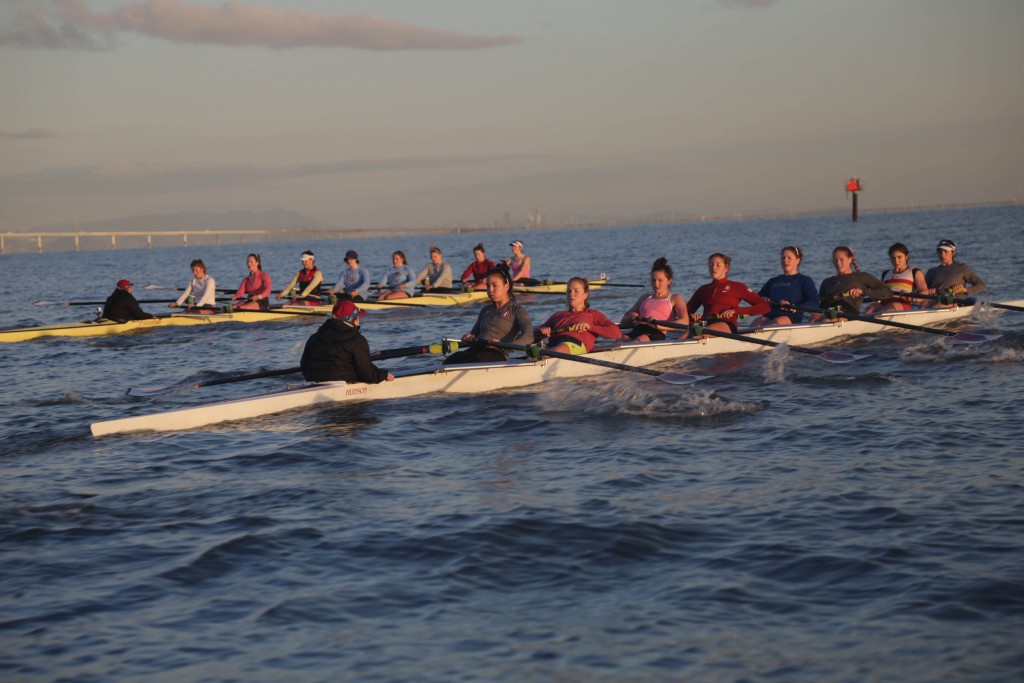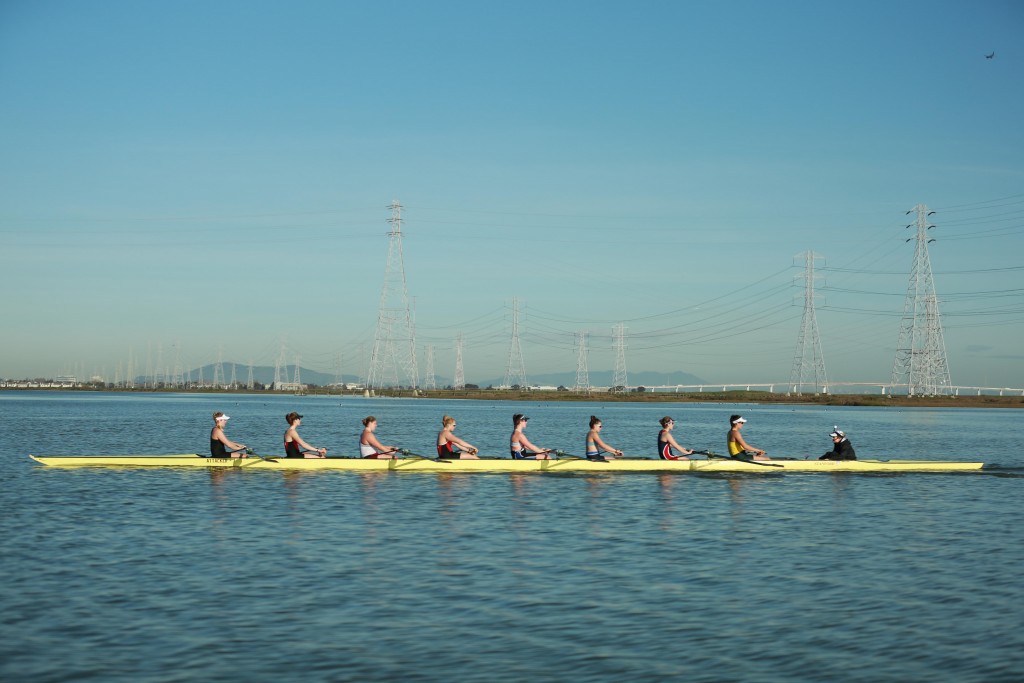Two boats rest side-by-side in the water. The air – cold, sharp and brittle – is polluted with intensity. With the sun rising, the Stanford Women’s Rowing team prepares for a practice race, cores engaged and able to take on a sack of bricks. Their blades sink into the still water as the team waits for the signal.
“Right when the coach or coxswain says ‘go,’ you fire that first stroke, and you have to remember to breathe at that point,” said senior Ruth Narode, a member of the Stanford Women’s Rowing team. (EDITOR’S NOTE: Peninsula Press is a project of the Stanford Journalism Program.)
Narode started rowing during her sophomore year of high school when she was in-between seasons for basketball and lacrosse. She attended a “Bring Your Friend to Row Day” event and has stuck with the sport ever since.

Graduate student Emily Grundman, a teammate of Narode’s, also happened upon rowing as a matter of chance. Grundman was set to play collegiate basketball until she hurt her knee and was dropped from the team. Her cousin, who had rowed at Stanford and was a member of the U.S. Men’s Rowing team in the 2016 Olympics, encouraged her to reach out to the Stanford Women’s Rowing coach.
“Suddenly the stars just aligned in a really serendipitous way, and the next thing I knew I was flying west to begin rowing at Stanford,” Grundman said.
Other members of the team, like junior Alie Rusher, grew up around the sport with parents who rowed. She remembers a time around when she first started rowing, and she competed in a mock race against her mother and sister for fun.
“I came in last by so much and was so mad. That was when I realized how competitive I was going to get in the sport,” Rusher said.
Rowing can be a seemingly calm sport on the outside: oars slide through water in lengthy, sweeping strokes like those of a paintbrush on canvas; the forward-and-back motion becomes hypnotizing. On the inside, however, the women are paying meticulous attention to every stroke, their minds acting as the shutter of a camera, examining each miniscule movement individually.

“I’m trying to be focused – very internally focused – during the practice on what am I trying to do to make this boat for this stroke as fast as it can be,” Narode said.
The women train six days a week, and for four of those days, they practice two times a day. When they’re not out on the water, the team’s practices are combinations of weight training, cardio and time spent on the erg machine.
“And then we get Sundays off,” Narode said.
Beyond the friendships that develop naturally from spending roughly 20 hours each week together, the teammates describe an immense level of respect for one another. “In rowing there’s a lot of pain; it tires you out mentally, emotionally, physically, and [with] that aspect, there’s a certain camaraderie in the boat,” Narode said.
Narode explained that she sees the sport of rowing like she sees life: “Rowing is a metaphor of what we’re trying to do as beings, which is sometimes working with all these people, trying your hardest, improving everyday and giving it your best to be the best you can be at any given time.”
[metaslider id=10019]
